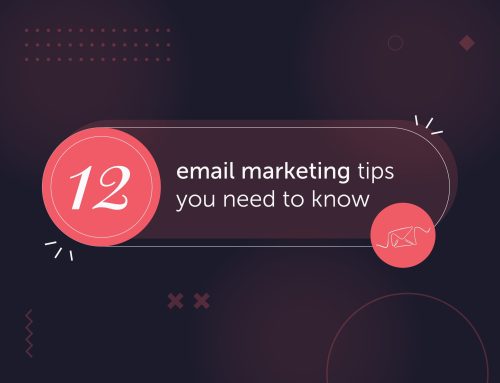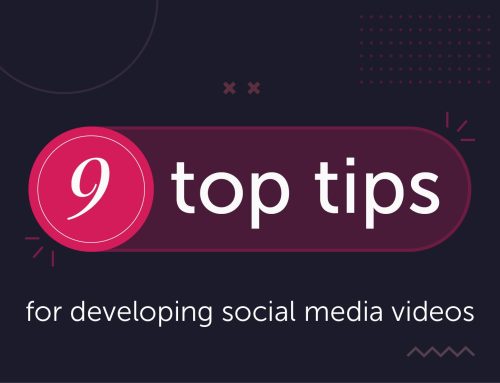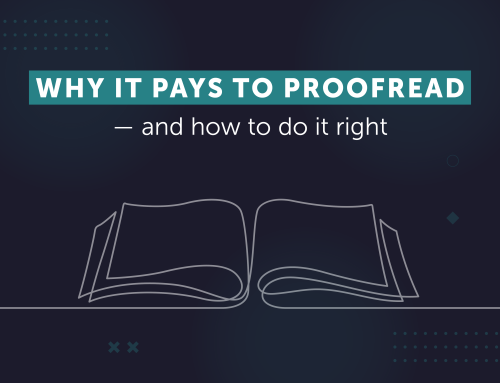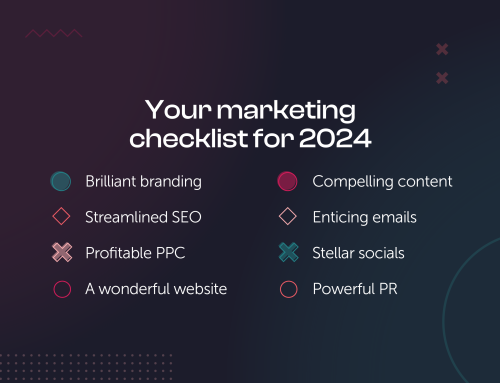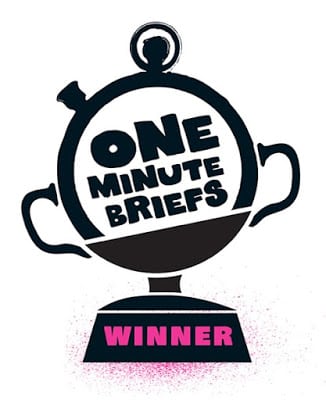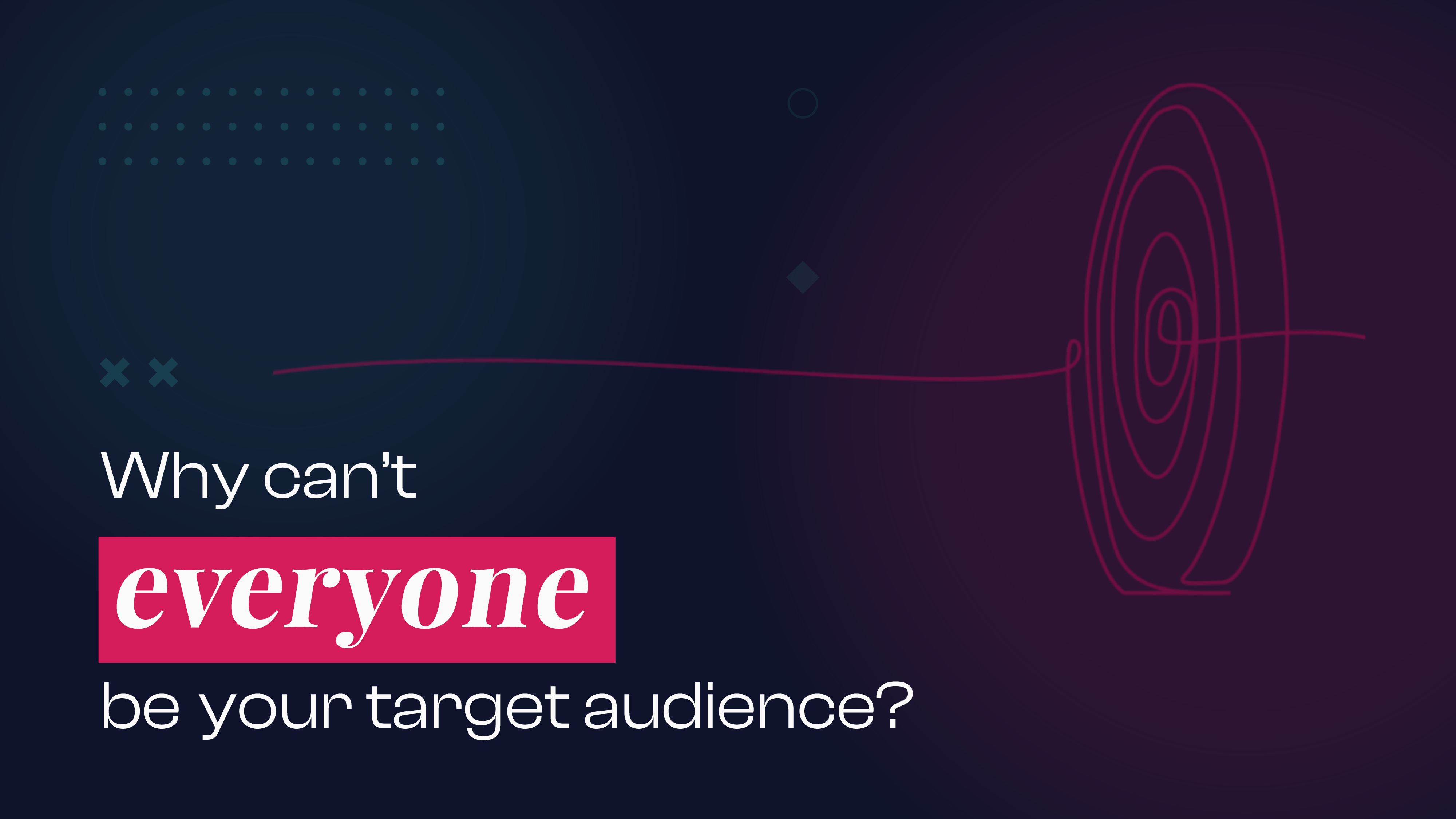
It’s never been more difficult for companies to stand out in the competitive online landscape.
And yet, plenty of business leaders still neglect their target audience analysis — the research that reveals patterns in customer data and helps build accurate customer profiles and effective marketing strategies.
You might think that winging it based on what you think you know about your audience will suffice. Equally, you may believe that concentrating your efforts on only a specific group of people is counterintuitive.
But we’re here to tell you: if you’re talking to everyone, you’re talking to no one — and that means you’ll struggle to capture the interest of your ideal customers.
So, what’s the secret to conducting effective target audience research — and how should you go about it?
Understanding your target audience
You probably think you know your clients and customers quite well — the kinds of people they are, what they’re interested in and why they interact with your company or brand.
But if you’ve never conducted target audience research (or it’s been a while since you last did), there’s a high chance you’re running off assumptions that might not be accurate. So, why does this matter?
Think of it this way: no movie will appeal to everyone. As such, filmmakers must understand who exactly they’re creating it for to be able to market it to the right target audience and achieve box office success. Otherwise, it’s potluck whether cinemagoers will enjoy the film or leave unimpressed, having been sold an experience that didn’t match their expectations.
The same goes for the business world. Without a deep and up-to-date understanding of who your customers are and what they want or need at different stages in their journey, your buyer personas (summaries that represent the characteristics of your main target audience groups) will be top-level at best. As a result, you’ll probably produce generic messaging for your campaigns based on stereotypes and presumptions about what consumers are looking for.
Although these campaigns might get some customers to bite, they won’t address your target audience’s more specific pain points and desires. As a result, a significant proportion of your emails will remain unopened, your click-through rates will stay low, and your social posts will keep getting scrolled past in the feed.
That’s not what you want when you’re trying to develop long-term customer relationships and stand out from competitors. So, is there a better way?
Unlocking value in your research
Though it might be tempting to take a broad-brush marketing approach, McKinsey research has proven that personalised content has a 76% higher likelihood of converting sales.
With that in mind, conducting a more in-depth review of your customer data will help you:
- Personalise your campaigns with the customised content consumers expect.
- Make more informed marketing decisions that generate tasty returns on investment.
- Maximise your reach by identifying underserved market segments.
- Create a bank of audience data to help streamline your content strategy.
However, there’s more to this type of research than just learning the demographics of your audience…
Whilst surface-level characteristics like age, gender and occupation might tell you who your customers are, they won’t give you any insight into their motivations and behaviours — essential information for developing your content strategy.
We’ll call this the ‘so what?’ factor — the thing that points to the broader value of your target audience research.
Let’s use a beer brand as an example. Beer company marketing campaigns are typically male-dominated — which makes sense, considering that The Gender Pint Gap study by Dea Latis found only 17% of women drink beer at least once a week compared to 53% of men.
However, the same study found that male-orientated advertising is one of the main barriers preventing more women from drinking beer, suggesting that the companies that see men as their only target audience are missing an opportunity to capitalise on the female alcohol market.
By asking ‘so what?’, these brewers could learn why their audience is primarily men and discover what female beer drinkers are looking for instead of assuming they’re not interested — helping to inform bespoke campaigns that’ll stand out from the crowd.
No brainer, right? Still, you first need to know how to collect the customer data that’ll unlock these high-level insights…
Conducting effective audience analysis
Before you start your new target audience project, it’s crucial to understand how to avoid oversimplifying buyer personas and customer profiles.
The solution? Segmenting your audience based on these four themes…
- Demographics — defining characteristics of your customers (e.g. age, gender, education, income, race, religion, occupation).
- Geographics — information on where your audience lives and shops (e.g. location, climate, language, culture, urban/rural).
- Psychographics — details about what makes your audience tick (e.g. hobbies, values, lifestyle, opinions, personality).
- Behaviours — insights into how your customers interact with your brand (e.g. spending habits, browsing patterns, brand loyalty, product feedback, stage in customer journey).
By analysing characteristics across these four categories, you can pull out patterns that are more useful and relevant to your business model and marketing goals than demographics alone, which is where target audience research often stops.
Then, armed with these insights, you can start identifying weaker areas in your audience knowledge and inform your content strategy.
Not sure where to start? Here are some questions you can ask yourself to put your audience data into a practical context…
1. What do your customers have in common?
Do they all live in a specific area? Are they more likely to shop online vs in-store? Do they share the same hobbies or work in the same industry? Whatever the case may be, identifying these patterns can help you create more detailed customer personas and tailor your content accordingly.
2. What are their main challenges?
Understanding your customers’ pain points is probably the most essential part of your research. With this knowledge, you can appeal to them more directly — capturing their attention with targeted messaging that addresses their primary concerns or challenges.
3. What does your audience care about?
Do your customers only buy sustainable products? Will they look for you to support a particular cause, or are they more motivated by the price point of your services? Knowing the answers to questions like these will come in handy when you start brainstorming content ideas and communicating your company culture and values.
4. What motivates them to make a decision or enquiry?
Who’s in charge of hitting ‘buy’ or ‘enquire now’, and what makes them do it — or choose not to? Understanding these things can help you customise your messaging at strategic points in the marketing funnel, which defines your customer journey.
So, there you have it!
By delving deeper into target audience analysis, you can gain actionable insights and develop a winning marketing strategy that helps you stand out with personalised messaging that your customers will love.
It might take a little time to get it right, but we promise — the results will be worth it…
Do you need help conducting detailed target audience research and harnessing customer data to create a winning digital marketing strategy? Our in-house experts will get you on the right track — just call 01252 717373 or email hi@hypedmarketing.co.uk to speak to the team!

